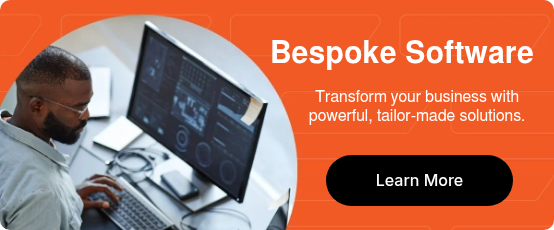How to build an MVP in under a month
The term "MVP" is frequently used in the tech world, but what exactly is an MVP? An MVP or, "Minimum Viable Product" is the simplest version of your product that includes just enough features to satisfy early users and provide feedback for future developments. The goal of an MVP is not to be a final, polished entity, but rather a tool for learning about your customers and validating your business idea with minimal investment.
What is an MVP?
Think of an MVP as the prototype of your final product. It has enough essential features to address the core problem your customers are facing, with the ability to attract those customers. While it may lack some of the bells and whistles of a full scale release, an MVP is about speed to market and learning. By launching an MVP quickly, you can learn how real users react and gather valuable insights to make data-driven decisions for future enhancements. Then, you can make improvements over time, ensuring your final product aligns more closely with customer needs.
Types of MVPs
When we talk about MVPs, we often hear two terms: "throwaway" and "iterative”. Understanding the difference between them can help you decide which approach is best for your project, so let’s clear up what these two terms mean:
- Throwaway MVP: You can think of this version as a quick sketch. A low-cost prototype is made very quickly to test an idea and see the level of initial interest, or to solve a specific problem. After feedback is collected, the throwaway MVP is often discarded, and development begins on a more refined version based on what was learned.
- Iterative MVP: An iterative MVP is designed with the future in mind. It starts simple with a basic version, but is designed to be continuously improved, developed and enhanced based on user feedback. This type of MVP evolves into the final product.
Pros and Cons
Both types of MVPs have their unique strengths and potential drawbacks, depending on your business goals and resources:
- Throwaway MVP
- Pros: Quick to build and good for testing multiple ideas with minimal investment
- Cons: Time and resources spent on it may feel wasted as neither the code nor design elements are typically reused.
- Iterative MVP
- Pros: Directly evolves into the final product, making initial investments and efforts more worthwhile by gradually enhancing the same codebase.
- Cons: May require more planning, resources, time and initial investment due to it being designed to be expanded and refined continuously.
7 Steps for Building an MVP in Under a Month
At Evolved Ideas, we help businesses jump-start their tech projects to help our clients get their product to market faster. We’ve streamlined the process of developing an MVP to deliver it in less than a month, here’s how you can apply the same principles:
- Define your Core Features: Focus on the essential features that solve the main problem for your customers. Focus on what will deliver the most value right away. Ignore the non-essential extras for now.
- Sketch a Plan: Create a simple roadmap outlining the necessary steps. This should include design, development, and what you need to test with your MVP. Try to prioritise speed and efficiency without sacrificing quality.
- Choose the Right Tools: Use tools and technologies that allow quick prototyping and development. Sometimes, ready-made platforms and frameworks can save weeks of work.
- Build a Team: If you don’t have the expertise in-house, consider teaming up with a company like Evolved Ideas. We offer everything from CTO services to complete development teams.
- Develop and Test: Build your MVP and test with real users in real-world scenarios. Gather feedback and be ready to learn from it for improved next steps!
- Iterate Quickly: Use the feedback to make quick refinements and improvements. The faster you iterate, the closer your final product will align to your customers' needs.
- Use EasyGo: Building software often involves writing the same code over and over again, wasting time and budget. At Evolved Ideas, we built EasyGo - our in-house starter template. When we start a client project using the EasyGo template, we have all the basics covered so we can spend more time building custom functionality that sets your product apart.
Conclusion
Building an MVP in less than a month is not only possible, it's also a fantastic way to test your business ideas without a huge investment and with minimal risk. Whether you choose to go with a throwaway MVP to validate multiple ideas quickly, or an iterative MVP to refine over time, the key is to start simply, learn from real users, and ‘Evolve’ quickly. At Evolved Ideas, we specialise in turning these early models into market-ready solutions. So, if you’re ready to bring your tech idea to life, get in contact with us.

